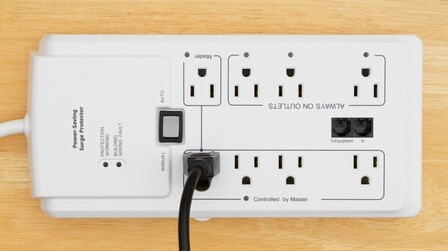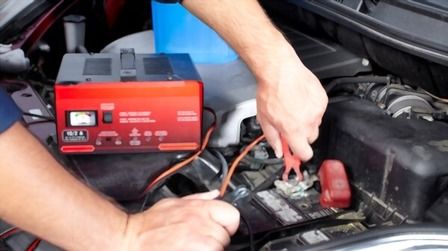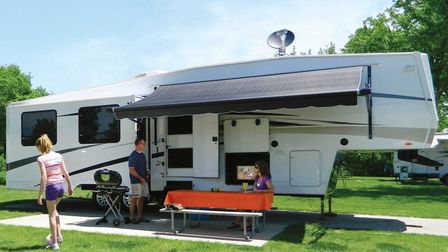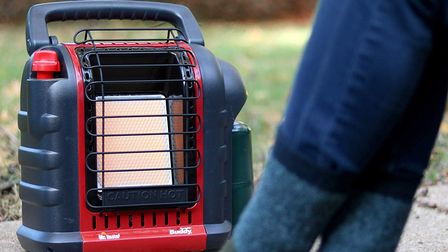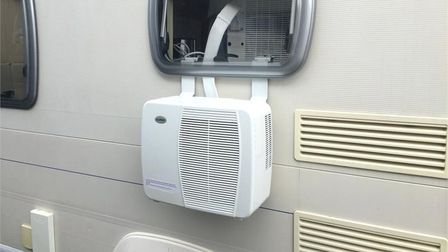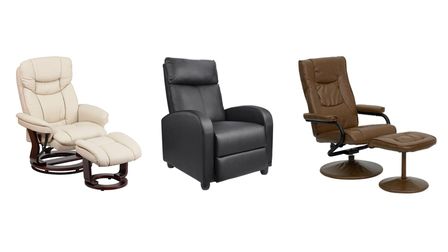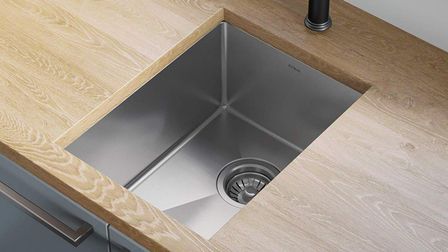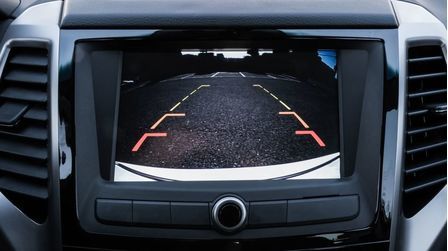Among numerous power outsources for RVs, solar panels are arguably the most popular as it’s eco-friendly, clean, low-maintenance, and quite. Moreover, this source of power is ABSOLUTELY free.
If you’re serious about the consideration of choosing the best solar panels for RV, the list below might be what you’re after.
Here are the best solar panels for RV (Jul 2025 Update):
- Best Overall: Renogy 100 Watts
- Best Bang for the Buck: WindyNation 100 Watt
- Top Rated: ACOPOWER 100W
- Highly Weather-Resistant: HQST 100 Watt
- Most Flexible: WindyNation 100W
- High Energy Output: Renogy 400W
| Top 6 Best Solar Panels For RV | ||
|---|---|---|
Best Overall | Renogy 100 Watts | Read Our Review |
Best Bang for the Buck | WindyNation 100 Watt | Read Our Review |
Top Rated | ACOPOWER 100W | Read Our Review |
Highly Weather-Resistant | HQST 100 Watt | Read Our Review |
Most Flexible | WindyNation 100W | Read Our Review |
High Energy Output | Renogy 400W | Read Our Review |
Best Overall: Renogy 100 Watts

Very user-friendly: LCD screen, 5V 2A USB ports & user-adjustable settings
Can deal with different weather conditions, even snows, and winds
Can supply maximum voltage of 600V
The charge controller is low-end
Don’t have AWG markings on the cables, some research will be needed
I believe Renogy 100 Watts is an unbeatable RV solar panel currently on the market due to its phenomenal performance.
Made from premium aluminum – one of the most heavy-duty materials for RV solar panel systems nowadays, this Renogy is capable to deal with the changing weather conditions, even snow loads or heavy winds.
The unit also comes with other impressive features.
Such as the versatile charge controller to charge 12V, 24V, and 48V batteries; the compatibility to both on-grid and off-grid power inverters to supply maximum voltage of 600V; and the pre-installed diodes for easier installation.
My most favorite is the ideal output that can reach up to 500W/day. Accordingly, the solar panel system just takes around 3 hours to fully charge a 50Ah battery from 50%.
Renogy 100 Watts Specifications | |
Cell Type | Monocrystalline |
Maximum Power | 600V DC |
Current at Pmax (Imp) | 5.72A |
Voltage at Pmax (Vmp) | 17.9V |
Ideal output | 500Wh/day |
Charger Controller Included | Renogy Wanderer 30A PWM Charge Controller |
Dimensions | 6.5 x 4.3 x 1.8 In. |
Weight | 19.84 pounds |
Highlight Features | Integrated 5V 2A USB ports to charge USB devices |
With a reasonable price tag, great warranty, easy installation, heavy-duty components, and user-friendly construction, I bet you’ll find yourself smitten for the Renogy 100 Watts solar panels.
Best Bang for the Buck: WindyNation 100 Watt
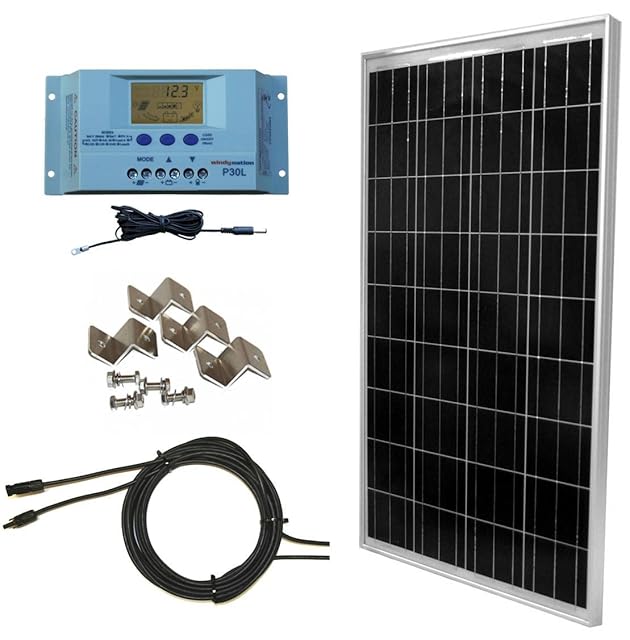
Can automatically adjust overcharge or over-discharge voltage to lengthen the battery’s lifespan
Versatile: Work for many other applications, like boats, homes, motorhomes, and cabins
Designed as a complete kit with a useful instruction for beginners
Lower watt-hour charge than other counterparts
For beginners, if you intend to try utilizing a complete solar panel kit on your rig, the WindyNation 100W is a particularly ideal choice to start with.
It comes with full basic components and in addition to some necessary mounting hardware, like fastener sets and mounting brackets while the price is miserly under $160. Besides, it can work for versatile applications, like cabins, homes, RVs, boats, and motorhomes.
You will also appreciate the LCD display PWM charge controller that allows you to utilize it for either remote or backup power. For those who don’t understand yet, it can handle with hassle-free 4pcs or 8pcs of 100W solar panels due to your preference of using a 12- or 24-volt system.
The best thing is WindyNation 100W auto-adjusts overcharge or over-discharge voltage thanks to the external temperature sensor, which means you can extend your battery’s lifespan.
WindyNation 100 Watt Specifications | |
Cell Type | Polycrystalline |
Maximum Power | 100W |
Current at Pmax (Imp) | 5.75A |
Voltage at Pmax (Vmp) | 13.8V |
Ideal output | 350Wh/day |
Charger Controller Included | 30-Amp (user adjustable) WindyNation P30L LCD Display Solar Charge Controller with Battery Temperature Sensor |
Dimensions | 40 x 1.4 x 26.4 inches |
Weight | 10.86 pounds |
Highlight Features | Kit includes many accessories |
By including full essential gears and necessary mounting hardware, the WindyNation 100W is the most bang-for-bucks solar panel kit to outfit in your RV.
Top Rated: ACOPOWER 100W

Battery and Generator Ready to charge multiple appliances at once
A protective case to secure the kit when storing
Can expand up to 200W
No complaints, I’m happy with this purchase
The off-grid ACOPOWER 100W is built with two 50-watt solar panels, meaning they are foldable and extremely portable to easily carry anywhere. A protective suitcase is also included to secure the kit while transport.
Like other good RV solar panel systems, this unit is constructed with an aluminum frame, IP67 waterproof materials, pre-installed stands, and versatile MC4 connectors.
What makes it outstanding is the Battery and Generator Ready with multiple choices thanks to the included alligator clasp. In other words, you can charge a 12V RV/Car/Boat/Trailer battery and a solar freezer/generator at once.
The ACOPOWER is also known for its capability to expand power up to 200W with minimal and fast setup.
ACOPOWER 100W Specifications | |
Cell Type | Monocrystalline |
Maximum Power | 200W |
Current at Pmax (Imp) | 6A |
Voltage at Pmax (Vmp) | 22.3V |
Ideal output | - |
Charger Controller Included | PWM Controllers |
Dimensions | 28.5 x 22.9 x 4.1 inches |
Weight | 25.6 pounds |
Highlight Features | Battery and Generator Ready with three choices |
For those who are in need of a portable RV solar panel kit with weather-proof construction, ACOPOWER 100W will never let you down.
Highly Weather-Resistant: HQST 100 Watt

Pre-drilled holes for quick mounting and securing
Innovative encapsulation component for superior cell performance & extended service life
Polycrystalline solar cells for extra protection
Connectors aren’t detachable
No mounting hardware
Out of variable weatherproof RV solar power systems, the HQST is the best.
While featuring an IP65 rated junction box to withstand low-pressure water jets, it can hold up well under 5400 Pa of snow loads and 2400 Pa of high winds. That’s a big thank you to the perfect combo of a corrosion-resistant aluminum frame and advanced encapsulation material.
This kind of material is very worth-considering as it’s crafted with multilayered sheet laminations for extended service life and superior cell performance.
But to talk about the biggest selling point, it must be the polycrystalline solar cells. They are crafted with tempered glass to excel the protection, which is a big bonus for an off-grid solar panel kit like this.
HQST 100 Watt Specifications | |
Cell Type | Polycrystalline |
Maximum Power | 100W |
Current at Pmax (Imp) | 5.50A |
Voltage at Pmax (Vmp) | 18.2V |
Ideal output | 500Wh/day |
Charger Controller Included | No |
Dimensions | 35.6 x 25.9 x 1.4 inches |
Weight | 15 pounds |
Highlight Features | Withstand high winds (2400 Pa), snow loads (5400 Pa) |
If you’re in a tight budget, the HQST 100W, with highest weather-resistant performance and versatility, will be the best bet.
Most Flexible: WindyNation 100W

Give a maximum flex of 30 degrees to efficiently mount on curved surfaces with ease
Be the lightest product in this list for easier carry, storage, and transport
Super thin
Does not have ideal finish
The WindyNation 100W Bendable offers a solution to the current market that previous solar panel systems can’t do – setup in curved surfaces (boats, cabins, RVs, trailers, and carports). As maximum, it can be bent up to 30 degrees.
The unit also highlights a thin silhouette – only 0.1-inch-thick - that when installing above your RV, it can hide more easily on sight. The installation is accordingly easy as well. You only need to attach suction cups to the corners of the module and done.
What amazed me the most is its incredible lightness (3.18 pounds, even lighter than its competitor – the ALLPOWERS), making it the most valuable compact product in this industry.
WindyNation 100W Specifications | |
Cell Type | monocrystalline |
Maximum Power | 100W |
Current at Pmax (Imp) | - |
Voltage at Pmax (Vmp) | - |
Ideal output | 350 Watt Hours |
Charger Controller Included | No |
Dimensions | 106.7 x 2.5 x 69.8 inches |
Weight | 3.18 pounds |
Highlight Features | Flexed to a maximum of 30 degrees |
The WindyNation 100W Bendable Solar Power System with emphasis on 30 degrees of flex is a top-rated option for those who want a product to install in curved surfaces.
High Energy Output: Renogy 400W

Give a high-efficiency value of up to 18.4%
Perform decently even in low-light conditions
Advanced controller to handle 800W of power
Deliver 2000Wh per day – good for small consumption use while giving location independence
Not include an installation instruction
Not include a battery bank
This Renogy solar panel kit makes a great step up in its performance with the impressive 400W rating. For travelers who look to high energy output to power their rigs, this is a key selling point.
By using monocrystalline solar cells, it delivers the highest efficiency rating in this list – up to 18.4% that performs truly well even in sub-optimal, low-light conditions.
Rover MPPT charge controller is another big bonus when it’s arguably more efficient than the PWM models in terms of RV applications. This latest version is built to allow for battery compatibility and aesthetically clean flush mounting.
It can also handle up to 800W of power.
Renogy 400W Specifications | |
Cell Type | Monocrystalline |
Maximum Power | 800W |
Current at Pmax (Imp) | 5.70A |
Voltage at Pmax (Vmp) | 17.7V |
Ideal output | 2000Wh/day |
Charger Controller Included | 40A Rover MPPT charge controller |
Dimensions | 42.2 x 19.6 x 1.4 inches |
Weight | 88 pounds |
Highlight Features | Advanced encapsulation material with multilayered sheet laminations |
For efficient high energy output, the Renogy 400W featuring four 100W monocrystalline panels is the best choice if that’s also what you’re searching for.
How To Choose A Good Solar Panels For RV?
Weight
This feature is particularly worth considering if you intend to install the solar panels on your RV’s roof as heavy models won’t last during snowfalls or hailstorms while the roof of your vehicle will be badly affected.
Ordinary RV solar panels generally weigh within 15 – 22 pounds. The lightest models currently on the market are flexible solar panels that weigh a mere 3 pounds. The heaviest that I’ve known is Renogy 400W but it’s the heavy-duty model designed for higher energy output.
Efficiency & Types of Solar Panels
The higher efficiency the solar panel, the better. Since the space on your RV is always limited, such solar power systems can maximize their output while taking really little space.
The efficiency is reflected in percentage (%) and it’s different among types of solar panels.
Up to now, there have been three: The amorphous, the polycrystalline, and the mono-crystalline. The third option currently gives the highest efficiency of 23% while the first is the lowest. In turns, remember the higher efficiency the type, the costlier.
Wattage cells
This indicator can be defined by the current that solar panels or every cell of theirs are capable of outputting. The higher the wattage cells, the better. It also leads to higher efficiency to safely run different electronics at once.
However, I don’t advise to choose the RV solar panels with the highest wattage cells because of the expensive price. You should rather go for a small system at first then, upgrade it gradually until fitting your demands the most.
Durability
As RV solar panels are usually off-grid, you should focus on their materials. At least, they should be weather-proof to handle the changing of different weathers, like downpours, snowfalls, and strong winds.
Meanwhile, it must be lightweight for easy transport. Accordingly, corrosion-free aluminum is the best options.
Which Brands Make The Best Solar Panels For RV?
Renogy
Out of many top-rated brands specialized in RV solar panels, Renogy gets my highest appreciation for the longest lifespan, durability, and heavy-duty components in their products. That means you’ve got a really good chance to continuously charge the RV batteries no matter the weather conditions.
WindyNation
In the DIY solar market, WindyNation is considered a reliable brand for people who want to eliminate completely the need to search and buy additional hardware for your solar power system. Moreover, their lines are vast to ensure meeting the deepest needs of yours
ACOPOWER
ACOPOWER products lead the market by their unique folding panel designs that are the most favorite of travelers or perpetual nomads.
HQST
Last but not least, is HQST – another well-known brand in the solar panel market. Like other competitors, their lines are diverse, from starting kits to marine solar panels but their best-sellers are the off-grid with highest weather resistance feature.
FAQs
Are solar panels for an RV worth it?
Solar panels are considered worthy for RV use for many reasons:
Require the energy-producing
Use natural, free power source -> eco-friendly, quiet operation, clean energy-producing, no fuel cost
High efficiency rating
Can be used efficiently even in cloudy areas
How many solar panels do I need to run an RV air conditioner?
To find out the exact number of solar panels you should buy to run your RV air conditioner, sizing is the most important step. Here is a full instruction about sizing solar panels to follow.
How does solar power work in an RV?
An RV solar power system relies on the sunlight hitting its panels to turn into an electric current and then, go into a charger controller and finally contain in the batteries.
But there, the produced electricity is in the form of DC power. It needs converting to AC power form for usage and that’s when the inverter comes into place.
Does RV battery charge driving?
There are two ways that allow you to charge RV batteries while driving:
Firstly, change to Anderson plugs to minimize the voltage loss while ensuring a huge amount of amp. This also lets the cable attach easily at the tow bar.
Secondly, organize the connections with the Voltage Controlled Relay where the replay is closed while paralleling the start and auxiliary batteries automatically. It means the RV batteries will be charged when the vehicle starts and disconnected when it turns off.
Which are better monocrystalline or polycrystalline solar panels?
Monocrystalline and polycrystalline are both crafted from crystalline silicon and each of them features specific strengths and weakness. To know which is better for your needs, look at this table:
Monocrystalline | Polycrystalline | |
Pros | Highest efficiency rates More efficient in warm weather Long lifespan Require the least amount of space | Have a higher temperature co-efficient than monocrystalline Have slightly lower heat tolerance than monocrystalline Simpler and cost less producing process |
Cons | The most expensive | Less aesthetically pleasing than monocrystalline Lower space-efficiency Not quite as efficient as monocrystalline |
Conclusion
The most common drawback of RV solar panels is difficult setup but I’m glad that the list of best solar panels for RV above includes all the easiest models with specific pre-assembled parts.
This article is about to end but beforehand, I’d like to share one last note. Don’t ever mix a solar panel with one(s) from other different brands because the difference in electrical parameters can leave side effects on all of the panels.



